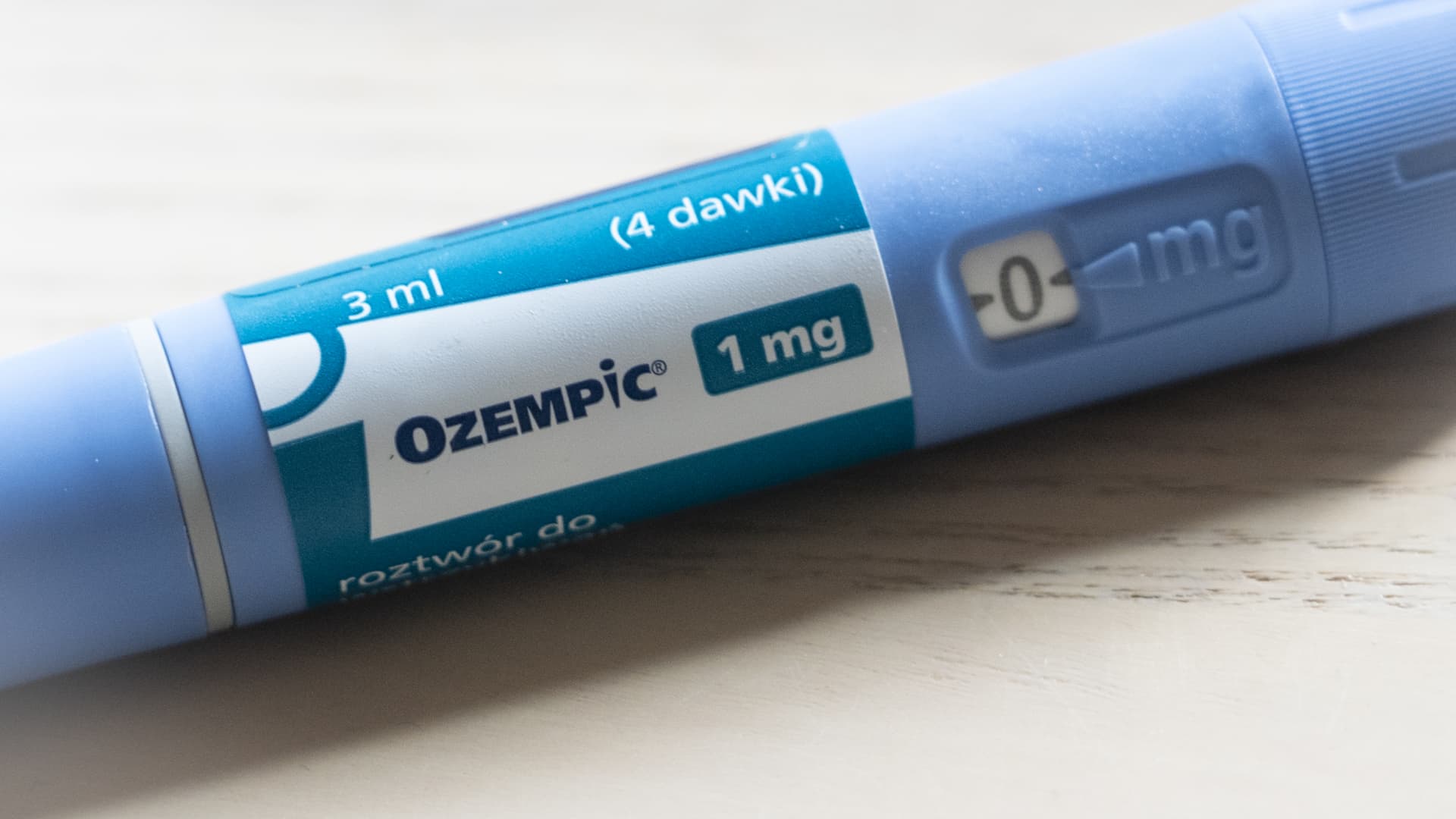Ozempic, Wegovy may curb drinking, smoking and other addictive behaviors – here’s what we know
Ozempic, Wegovy may curb drinking, smoking and other addictive behaviors – here's what we know CNBC


Sustainable Development Goals and the Impact of GLP-1 Agonists

In this article
- Introduction
- Effects of GLP-1 Agonists on Cravings and Addictive Behaviors
- Current Research on GLP-1 Agonists as Addiction Treatments
- Limitations and Future Directions
- Potential Benefits and Challenges of GLP-1 Agonists for Addiction Treatment
Heather Le Biller shed 9 pounds within the first week of taking Novo Nordisk’s blockbuster diabetes drug Ozempic – and then even more as she continued treatment.
Le Biller, a flight attendant who lives in France, noticed her appetite quiet down while taking the weekly injection. But so did her cravings for wine, a drink she called “almost customary to pair with every dinner” in France.
“When I was on Ozempic, it made me not want that as much anymore,” Le Biller told CNBC. “I could have a few sips of wine and just be satisfied and move on. I didn’t need multiple glasses a night, so it definitely seems to help with that.”
Le Biller is among several patients who took diabetes and weight loss drugs and also noticed an effect on their cravings for alcohol, nicotine, opioids or even some compulsive behaviors, such as online shopping and gambling.
Those drugs – including Ozempic and its weight loss counterpart from Novo Nordisk, Wegovy – are called GLP-1 agonists, which mimic a hormone produced in the gut to suppress a person’s appetite.
These anecdotal reports add to the growing list of potential benefits of GLP-1s beyond shedding unwanted pounds. Dramatic weight loss is the primary reason why those drugs have skyrocketed in popularity in the U.S., despite the fact that they can cost around $1,000 a month and some health insurers have stopped covering them altogether.
“We’re prescribing these drugs and seeing this effect as a secondary benefit in patients. One of my patients even said they’re not doing as much online shopping, which is helping their wallet,” said Dr. Angela Fitch, an obesity medicine physician and president of the Obesity Medicine Association. That group is the largest organization of physicians, nurse practitioners and other health-care providers dedicated to treating obesity.
What do we know so far?
Scientists have published nearly a dozen studies showing how GLP-1s stop binge drinking in rats and mice, reduce their desire for alcohol, prevent relapse in addicted animals and decrease alcohol consumption overall.
Earlier studies have examined older, less potent GLP-1s such as exenatide, a drug approved for diabetes under the names Byetta and Bydureon.
But more recent studies on semaglutide – the generic name for Ozempic and Wegovy – and another drug from Eli Lilly called dulaglutide “are the most promising” because they reduced alcohol intake in animals by 60% to 80%, according to pharmacologist Elisabet Jerlhag.
Studies have also shown that rats that stop taking dulaglutide, which is approved for diabetes under the name Trulicity, “take weeks before they start drinking again,” she said.
Jerlhag and her colleagues at the University of Gothenburg in Sweden have studied the effect of GLP-1s on addictive behaviors for more than a decade.
What needs more research?
Still, NIDA’s Leggio advises against using GLP-1s off-label to reduce addictive behaviors, “simply because there’s not enough evidence in humans that they work.”
“The animal studies are very promising and what people are reporting is very, very important, but as a scientist, I will also tell you that that’s not enough,” he told CNBC.
Leggio said scientists need to conduct more double-blind, randomized, placebo-controlled studies on humans – or trials where both participants and researchers don’t know who is getting randomly selected to receive a placebo or an actual drug. Those types of studies are “the gold standard” for proving whether a treatment achieves a certain effect or not, he added.
But even if those trials confirm that GLP-1s can reduce addictive behaviors in humans, “it will most likely work for some patients and not others,” according to Leggio.
“We already know, as a matter of fact, that these medications and any drug overall do not work for everybody,” he said.
Potential Benefits and Challenges of GLP-1 Agonists for Addiction Treatment
For example, the only clinical study in this area investigated whether exenatide could treat alcohol use disorder in people, as compared with cognitive behavioral therapy.
But a subgroup analysis of that 2022 study found that exenatide reduced drinking in a subgroup of participants who had obesity, while the drug actually increased drinking in people who didn’t.
The reason may be that “leaner patients” treated with exenatide experienced a larger decrease in blood sugar, which might be associated with increased cravings for alcohol, the researchers wrote in the study.
But even that hypothesis needs to be confirmed with further research.
It’s also unclear how long the anti-addiction effect of GLP-1s will last. That’s already one complaint patients have when it comes to weight loss: People who lose weight after taking Ozempic or Wegovy tend to gain most of it – or even more – back within a few years.
“It’s possible that some people will relapse and go back to heavy drinking if they stopped taking the medication,” Leggio said. He added that some patients will need constant treatment because addiction is a chronic disease.
However, Leggio said there’s “nothing wrong”
SDGs, Targets, and Indicators
1. Which SDGs are addressed or connected to the issues highlighted in the article?
- SDG 3: Good Health and Well-being
- SDG 12: Responsible Consumption and Production
- SDG 16: Peace, Justice, and Strong Institutions
2. What specific targets under those SDGs can be identified based on the article’s content?
- SDG 3.5: Strengthen the prevention and treatment of substance abuse, including narcotic drug abuse and harmful use of alcohol
- SDG 12.5: By 2030, substantially reduce waste generation through prevention, reduction, recycling, and reuse
- SDG 16.1: Significantly reduce all forms of violence and related death rates everywhere
3. Are there any indicators mentioned or implied in the article that can be used to measure progress towards the identified targets?
- Indicator for SDG 3.5: Number of people receiving treatment for substance abuse disorders
- Indicator for SDG 12.5: Amount of waste generated per capita
- Indicator for SDG 16.1: Number of homicides and other violent crimes per 100,000 population
Table: SDGs, Targets, and Indicators
| SDGs | Targets | Indicators |
|---|---|---|
| SDG 3: Good Health and Well-being | Target 3.5: Strengthen the prevention and treatment of substance abuse, including narcotic drug abuse and harmful use of alcohol | Indicator: Number of people receiving treatment for substance abuse disorders |
| SDG 12: Responsible Consumption and Production | Target 12.5: By 2030, substantially reduce waste generation through prevention, reduction, recycling, and reuse | Indicator: Amount of waste generated per capita |
| SDG 16: Peace, Justice, and Strong Institutions | Target 16.1: Significantly reduce all forms of violence and related death rates everywhere | Indicator: Number of homicides and other violent crimes per 100,000 population |
Behold! This splendid article springs forth from the wellspring of knowledge, shaped by a wondrous proprietary AI technology that delved into a vast ocean of data, illuminating the path towards the Sustainable Development Goals. Remember that all rights are reserved by SDG Investors LLC, empowering us to champion progress together.
Source: cnbc.com

Join us, as fellow seekers of change, on a transformative journey at https://sdgtalks.ai/welcome, where you can become a member and actively contribute to shaping a brighter future.







